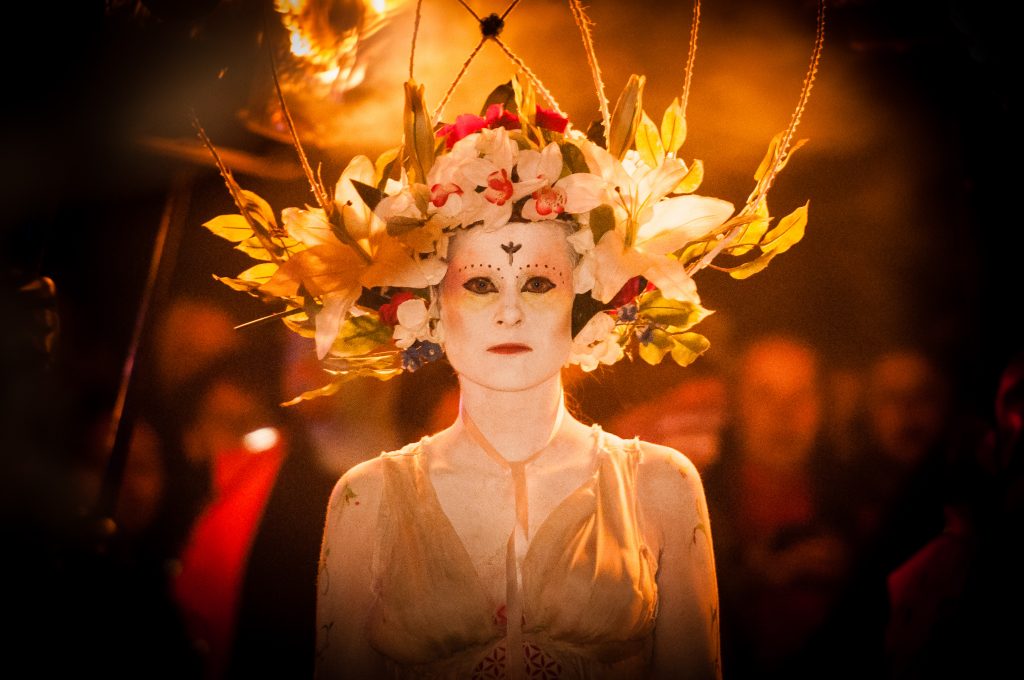Sunday 30 April marks 30 years of the reinterpretation of the Gaelic festival in Edinburgh and the Beltane Fire Society are inviting members of the public to learn more about the festival’s origins.
Held every year on Edinburgh’s Calton Hill, the modern festival is a procession lead by the May Queen and her counterpart, the Green Man. The wild mix of drums, fire and physical theatre seen during Edinburgh’s Beltane Fire Festival is a spectacular sight to be seen and carries on into the early hours of the first day of May. But what does it all mean?
Here are a few of the stories behind the symbolism of the Beltane festival…
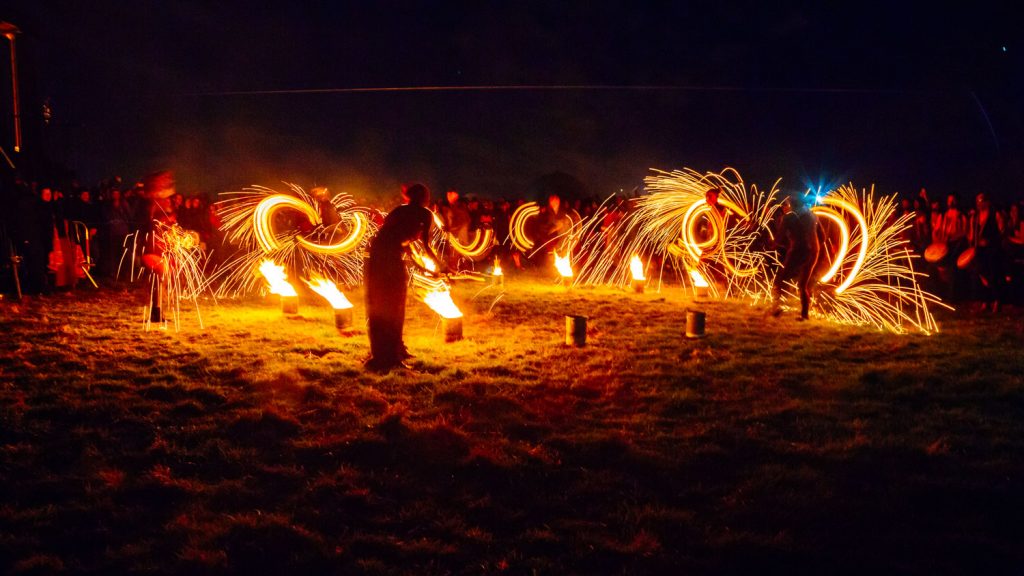
Image by Martin McCarthy, reproduced with permission of the Beltane Fire Society.
Fire
Beltane – which roughly translates as “bright fire” – was a tradition celebrated in various forms across the British Isles as the starting point of summer. One of four seasonal festivals (along with Samhuinn, Imbolc and Lughnasadh), it was a chance for communities to come together to mark the changing of the seasons.
Lighting the Beltane fires on the first of May was a symbolic move to recall the growing power of the sun and cleanse the community of the dark months spent indoors. In Scotland, cattle were traditionally driven around these fires and the community would dance and leap over the flames.
By the late nineteenth century, this practice had been almost abandoned. The fires of public Beltane celebrations in Edinburgh remained unlit until the modern festival was started in 1988 by a small group of enthusiasts, led by Angust Farguhar, then of the industrial music group, Test Dept, and with academic support from the School of Scottish Studies at the University of Edinburgh.
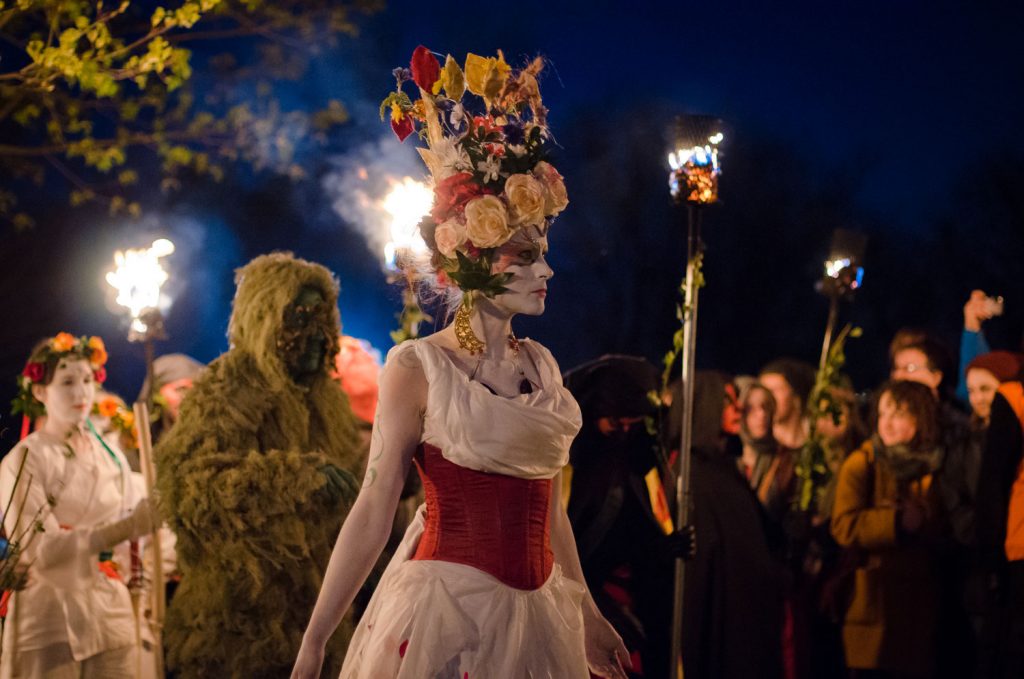
Image by Daniel Rannoch, reproduced with permission of the Beltane Fire Society.
May Queen
In the modern Beltane Fire Festival, amongst a cavalcade of characters, the May Queen leads her court around the hill.
The May Queen’s traditional garb is a white gown, symbolising purity, and usually a tiara or crown made of flowers. Flowers also featured heavily in Scotland’s first of May traditions during the Victorian era, when yellow flowers such as marigolds, primrose and hawthorn were placed at doorways and windows.
Green Man
A Green Man is a motif commonly seen in architecture, sculptures and carvings. The distinctive face of a man surrounded by or made from leaves, branches, flowers and vines is often interpreted as a symbol of rebirth.
Here are a few places to spot the Green Man in Scotland:
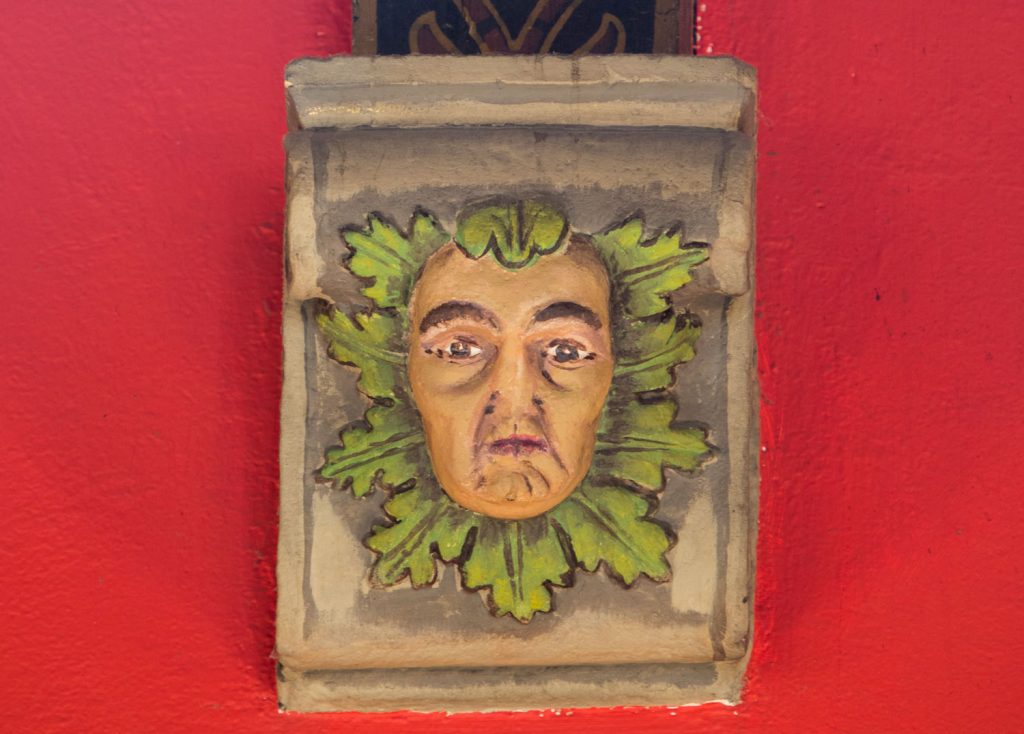
A Green Man looks down on tourists in the Great Hall of Edinburgh Castle.
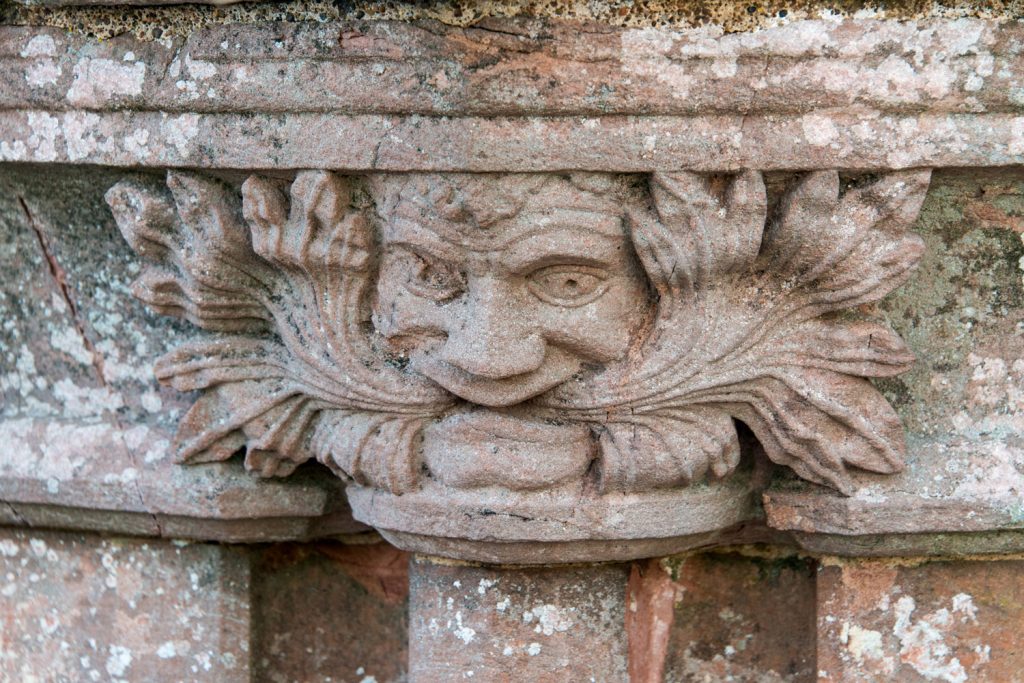
This Green Man can be spotted on a column at Melrose Abbey.
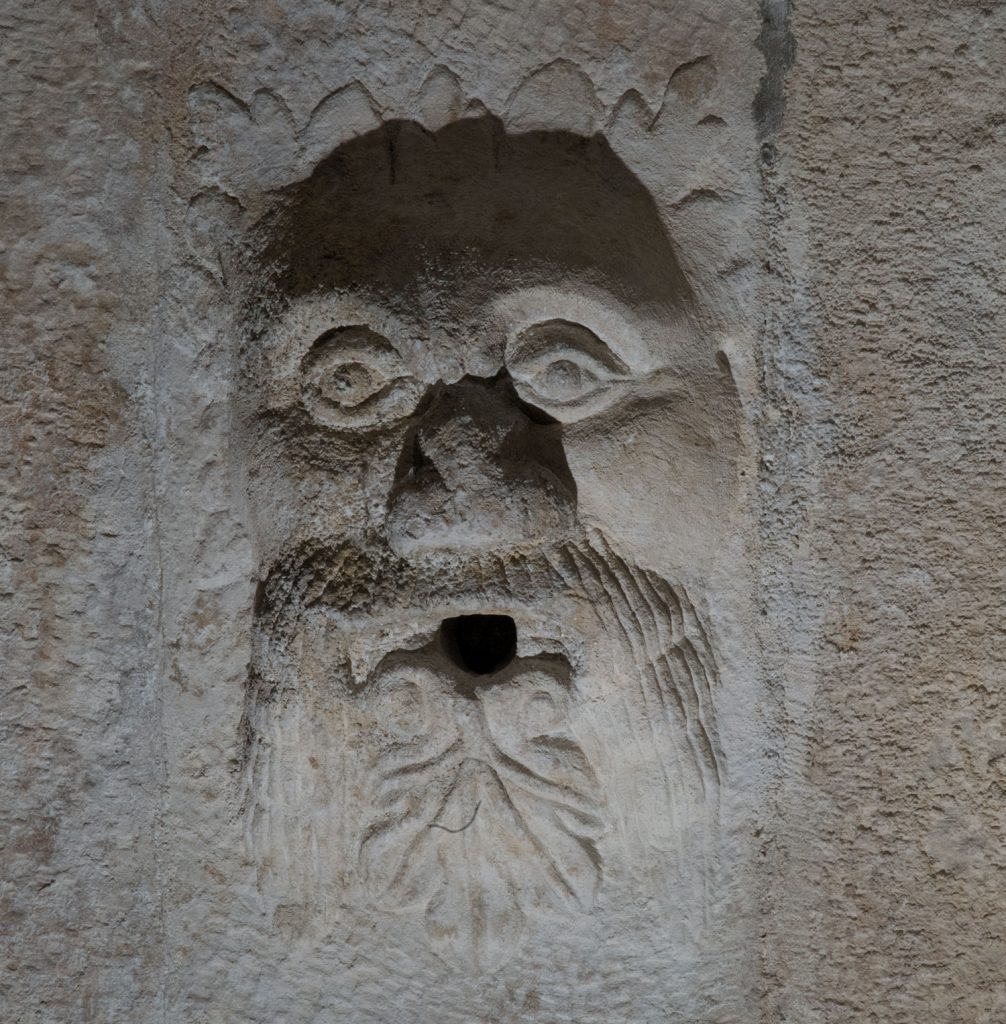
This Green Man is carved on the ceiling of the third floor of Castle Campbell‘s tower house.
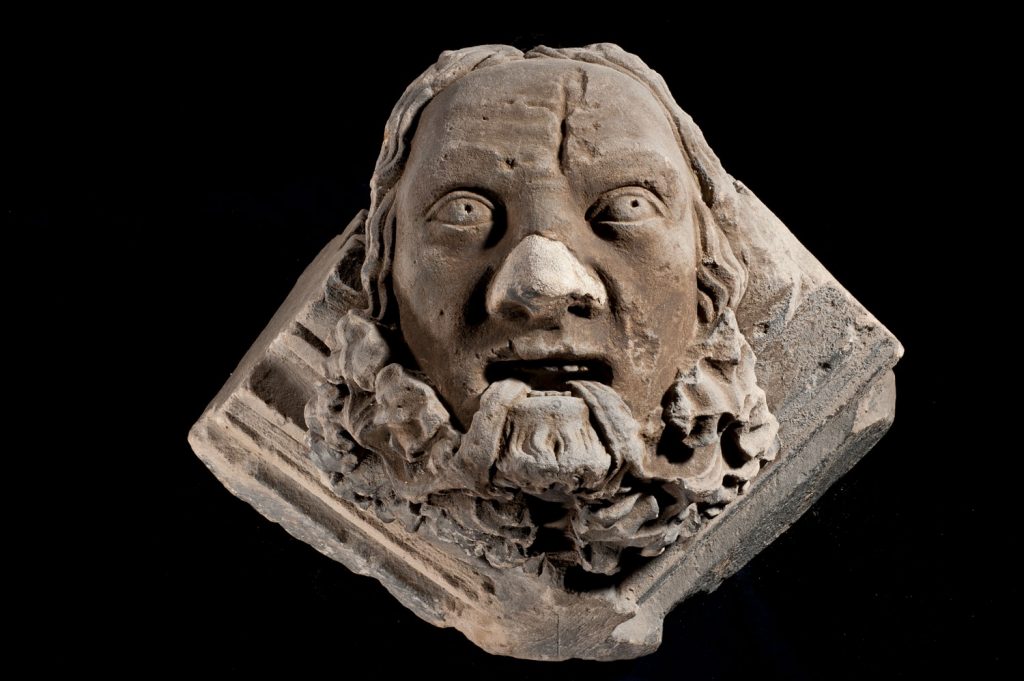
The head of this Green Man, with his thick wavy hair and foliage streaming from his mouth, can be found amongst the stones at Elgin Cathedral.
Following on from this theme of seasonal rebirth, the Green Man is stripped of his winter guise in a dramatic performance at Edinburgh’s Beltane Fire Festival. He is then reborn and the Beltane bonfire is lit to welcome the arrival of summer.
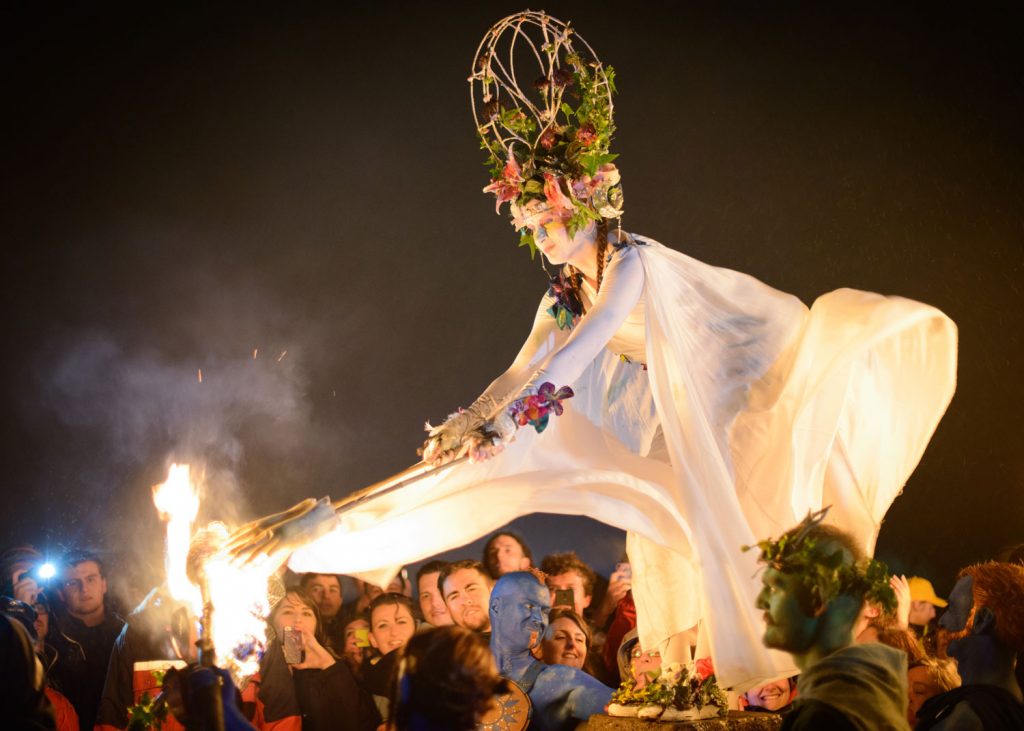
Image by Jasper Schwartz, reproduced with permission of the Beltane Fire Society.
Water
In Gaelic culture, the first day of May is called Latha Buidhe Bealltainn. Traditional customs, such as young girls washing their faces in the morning May Day dew to preserve youthfulness and attractiveness, still continue to this day.
Another common tradition on the first day of May was to leave offerings such as dumplings or coins in exchange for good health by the side of wells.
Water is represented at Beltane Fire Festival, along with the other elements, by characters and performances at different point on the procession route that the May Queen must bless on her journey towards summer.
Rhiannon Davies is the Communications Coordinator for the Beltane Fire Society. For more information about the Festival or to buy tickets for the event, visit: www.beltane.org
Featured image by Dan Mosley, reproduced with permission of the Beltane Fire Society.

